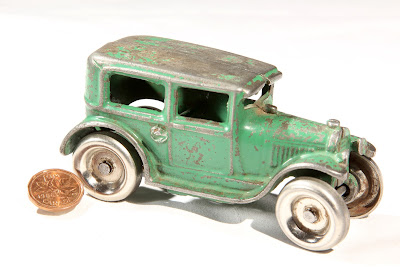Monday, June 4, 2012
Checking the Colour Temperature
of your Photo Lights
I'm sure most of you either use natural light or flash for your photos of toys. I use studio lights because I purchased them to do interior architecture, but that has not panned out (worked out) so far. I like to work with LTM 100 watt spotlights. These lights are spots and have a screw mechanism to focus or broaden the light spread. You can purchase 4-way barn doors to control the light as well. The light source is 3200 degrees Kelvin or what type "L" film used to be balanced for. The "L" represented long exposures of 1" and longer.
This is a quartz lightbulb that is used in the LTM spots.
It's important never to touch the glass with your hands as the grease form your hands will go into tiny pores (holes) in the glass and can cause the bulb to explode.
The light from these small bulbs is very bright and intense.
They cost about $ 8.50 - $ 12.00 per bulb.
I normally use 2 lights for most of my photograph.
I know 1 of them produces a different colour of light from the other, but I don't bother to correct them. I would do that by replacing one of the bulbs- the one that is producing that reddish and warmer shadow to the right of this toy Arcade car.
If you look at the shadow on the left, you can see that the shadow is "neutral in colour", whereas the shadow to the right of the car is "reddish".
What this means is that the "reddish" quartz bulb is getting older. As such , it no longer produces or emits the brightness that it originally come with. AS such, the colour temperature is being lowered to produce a warmer "reddish" colour. I could place a CC (colour-correction) filter over the light with a slight-blue colour to counteract the reddish colour. However, the cost of a sheet of 18" x 24" ((48cm x 61 cm) is close to $ 16.00 U.S.
A new bulb is less expensive.
SO what I'll do is replace the older bulb with a newer one, and perhaps keep the old one and wait for another one to age and warm up. Then I can colour-balance the light source from the 2 lights with my camera.
There are other ways to test the colour-balance of a lightbulb, but my "accidental" discovery of looking at the shadows certainly is a good way to test your light sources.
Thanks for visiting,
and as always have a great morning, afternoon, or evening,
wherever you may be reading this post.




No comments:
Post a Comment